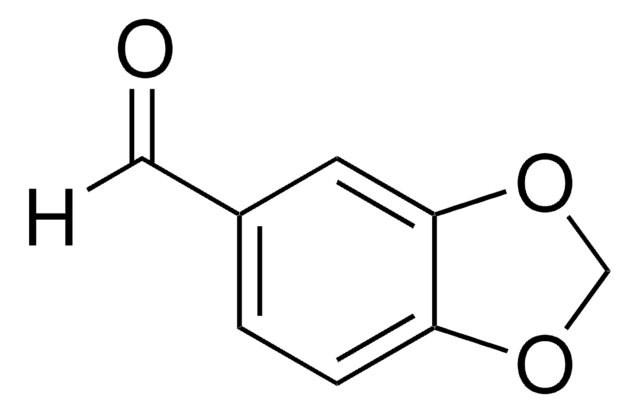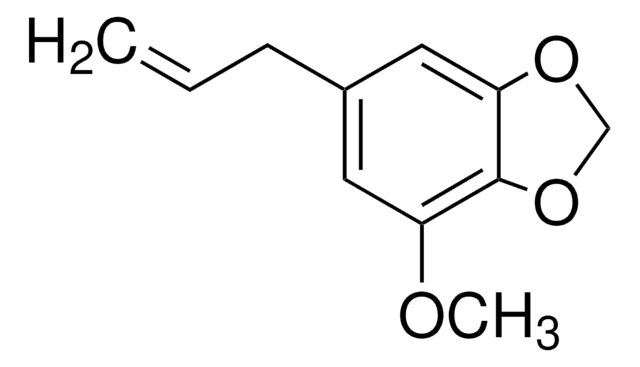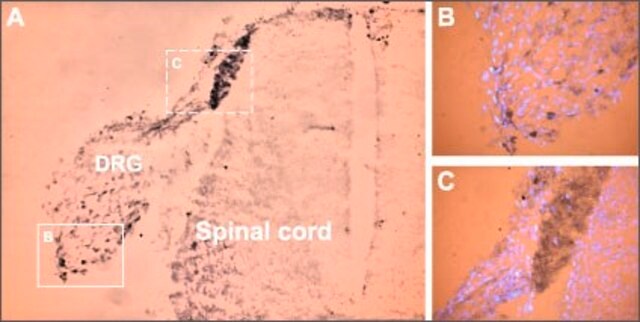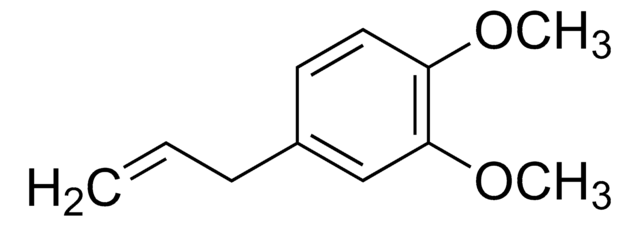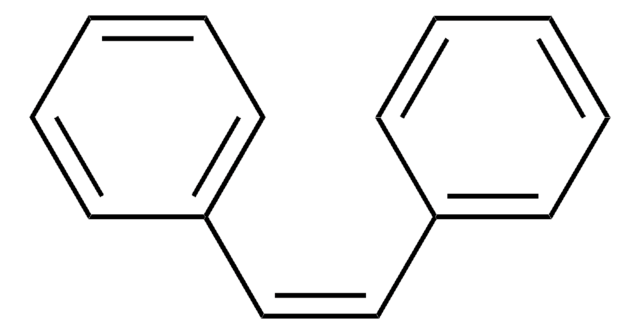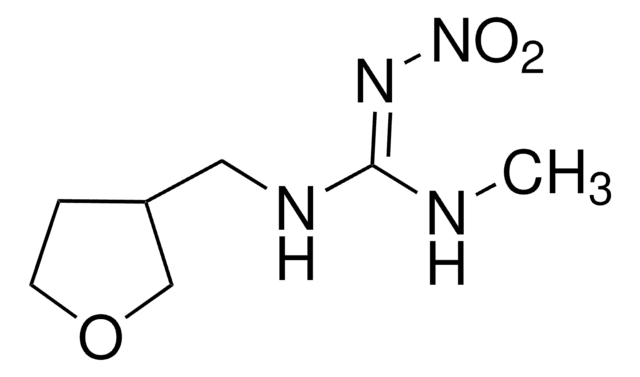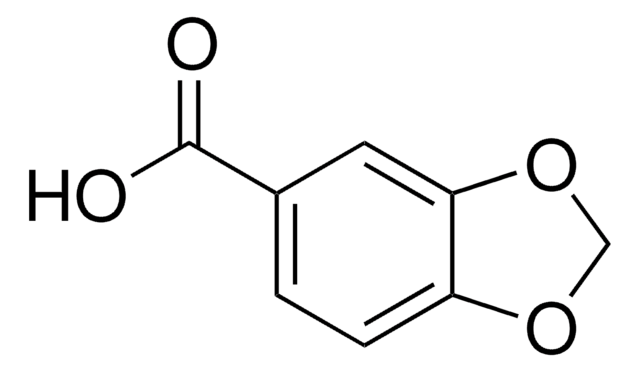S9652
Safrole
≥97%
Synonyme(s) :
4-Allyl-1,2-methylenedioxybenzene, 5-Allyl-1,3-benzodioxole
About This Item
Produits recommandés
Pression de vapeur
1 mmHg ( 63.8 °C)
Niveau de qualité
Essai
≥97%
Couleur
yellow
Indice de réfraction
n20/D 1.537 (lit.)
pb
232-234 °C (lit.)
Pf
11.2 °C (lit.)
Densité
1.095 g/mL at 25 °C (lit.)
Application(s)
metabolomics
vitamins, nutraceuticals, and natural products
Chaîne SMILES
C=CCc1ccc2OCOc2c1
InChI
1S/C10H10O2/c1-2-3-8-4-5-9-10(6-8)12-7-11-9/h2,4-6H,1,3,7H2
Clé InChI
ZMQAAUBTXCXRIC-UHFFFAOYSA-N
Vous recherchez des produits similaires ? Visite Guide de comparaison des produits
Catégories apparentées
Description générale
Application
Actions biochimiques/physiologiques
Autres remarques
Mention d'avertissement
Danger
Mentions de danger
Conseils de prudence
Classification des risques
Acute Tox. 4 Oral - Carc. 1B - Muta. 2 - Skin Irrit. 2
Classe de danger pour l'eau (WGK)
WGK 3
Point d'éclair (°F)
closed cup
Point d'éclair (°C)
closed cup
Équipement de protection individuelle
Eyeshields, Faceshields, Gloves, type ABEK (EN14387) respirator filter
Faites votre choix parmi les versions les plus récentes :
Déjà en possession de ce produit ?
Retrouvez la documentation relative aux produits que vous avez récemment achetés dans la Bibliothèque de documents.
Articles
DNA damage and repair mechanism is vital for maintaining DNA integrity. Damage to cellular DNA is involved in mutagenesis, the development of cancer among others.
Carcinogenesis and Epigenetics
Protocoles
US EPA Method 8270 (Appendix IX): GC Analysis of Semivolatiles on Equity®-5 (30 m x 0.25 mm I.D., 0.50 μm)
Notre équipe de scientifiques dispose d'une expérience dans tous les secteurs de la recherche, notamment en sciences de la vie, science des matériaux, synthèse chimique, chromatographie, analyse et dans de nombreux autres domaines..
Contacter notre Service technique